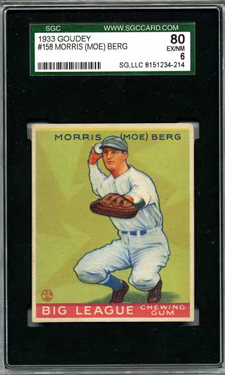|
|
INDEX
People
Abravanel,
Don Isaac
Berg, Gertude (Molly Goldberg)
Berg, Moe
Berle, Milton
Berlin, Irving
Bernstein, Leonard
Brandeis, Louis D.
Cardozo, Benjamin
Einstein, Albert
Elion, Gertrude
Frankel,Jacob
Gershwin, George
Ginsburg, Ruth Bader
Gompers, Samuel
Goode, Alexander
Goodman, Benny
Gratz, Rebecca
Greenberg, Hank
Hillman, Sidney
Hoffman, Jeffrey
Houdini, Harry
Jefferson, Thomas
Karpeles,
Leopold
Lamarr, Hedy
Lazarus, Emma
Lehman, Herbert H.
Levy, Asser
Levy, Uriah P.
Magnes, Judah L.
Meir, Golda
Miller, Arthur
Myerson, Bess
Noah, Mordecai.
Ochs, Adolph
Pulitzer, Joseph
Resnik, Judith
Rose, Ernestine
Rosenthal, Robert
Ross, Barney
Salk, Jonas
Salomon, Haym
Santangel, Luis de
Sarnoff, David
Schick, Bela
Seixas, Gershom M.
Singer, Isaac B.
Stern, Isaac
Straus, Isidor & Ida
Strauss, Levi
Streisand, Barbra
Szold, Henrietta
Torres, Dara
Torres, Luis de
Touro, Judah
Wacks, Mel
Wald, Lillian
Washington, George
Wiesel, Elie
Wise, Isaac Mayer
Zacuto, Abraham
|
 |
|
|
 |
Medal by Eugene Daub (2006),Moe Berg, the catcher who was a spy. |
|
|
Moe Berg (1902-1972)
Morris "Moe" Berg was born in New York City on March 2, 1902. He was fortunate enough to grow up and do two things in life he really enjoyed -- playing baseball and being an intelligence officer! Moe majored in modern languages at Princeton University, where he played on a championship baseball team. After graduating in 1923, he played for the Brooklyn Dodgers as a first baseman. Later, while attending Columbia Law School, Berg joined the Chicago White Sox, initially as shortstop but later as catcher.
Berg was admitted to the New York State bar in 1928. Even after joining a prestigious law firm, he kept playing for the White Sox! But one day, Berg was injured when he tore ligaments in his right knee. In 1931, the Sox traded Berg to the Cleveland Indians, and later he was traded to the Washington Senators. He was a member of the Senators' pennant-winning team in 1933, and set an American League record by catching in 117 consecutive games from 1931-1934 without making an error.

|
Because Moe was a baseball player with an unusual list of talents, he was always being invited to embassy dinners and parties ... and soon became very well known in the Capitol. In 1934, Moe Berg, along with players such as Babe Ruth and Lou Gehrig, toured Japan with an American all-star baseball team ... in spite of the fact that Casey Stengel is reported to have said that "Berg could speak in 8 languages, but couldn't hit in any of them."The government asked him to make some films of Tokyo Harbor and some military installations while he was there, giving Moe his first taste of intelligence gathering ... and he was hooked!
In 1938, Berg appeared on the radio quiz show "Information, Please!" It was these appearances that really made him nationally known. He was dazzling, and NBC received as many as 24,000 letters calling for his return. He would appear twice more.
The last baseball team Moe played for was the Boston Red Sox, where he later coached until 1941. Moe Berg got his chance to contribute more to his country when he was asked to tour Latin America for the Office of Coordinator of Inter-American Affairs, an agency set up to counter German, Italian and Japanese propaganda in Latin America. His natural ability in languages helped Moe to meet government officials, journalists, and businessmen ... and he reported much useful information to the agency's head, Nelson Rockefeller. Moe Berg's really big break came in 1943 when he was recruited into the Office of Strategic Services as a civilian employee. His first assignment was a secret mission to Yugoslavia to assess the strength of the two rival leaders there -- Draza Mihajlovic and Joseph Broz Tito. He correctly reported that Tito was stronger.
General William Donovan, the head of the OSS, placed Berg on the AZUSA project. This project looked at the enemy's progress in developing nuclear weapons. He interviewed scientists in Rome two days after the city was liberated by US troops to see how far the Italians had progressed in their research. Berg also entered German-occupied Norway as part of an Allied effort to find and destroy a heavy-water plant. In Switzerland, Berg found out from a visiting German scientist not only how far along the Germans were in developing their weapons of mass destruction, but also the location of the German scientists. This information came in handy after the fall of Germany, when Allied forces found the scientists and took them to England before Soviet forces could find them.
After the OSS was dissolved in 1945, Moe Berg served on the staff of NATO's Advisory Group for Aeronautical Research and Development. He was awarded the Medal of Freedom by the United States in 1946, but modesty led him to return it. Moe Berg may not be in the Baseball Hall of Fame, but he is the only baseball player honored by both the CIA Hall of Fame and the International Spy Museum!
Moe Berg: The Song courtesy of Chuck Brodsky.
Click Here to Take Moe Berg Quiz
Go to page: First Page Previous Page
Next Page
|